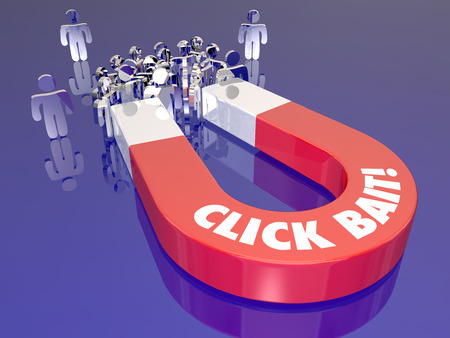Blog
Problems with click-bait advertising and how to avoid them
 Click-bait advertising is a type of online advertising that uses sensational, misleading, or controversial headlines and images to lure users into clicking on an ad or visiting a website. The goal is to generate a large amount of traffic to a website or other online destinations without considering if the content is actually relevant or valuable to the viewer. While it seems at first effective at driving traffic from ad serving because these ads have very catchy headlines, this is not a sustainable way and it can be very problematic for advertisers, publishers and viewers. Below are a few problems with click-bait advertising:
Click-bait advertising is a type of online advertising that uses sensational, misleading, or controversial headlines and images to lure users into clicking on an ad or visiting a website. The goal is to generate a large amount of traffic to a website or other online destinations without considering if the content is actually relevant or valuable to the viewer. While it seems at first effective at driving traffic from ad serving because these ads have very catchy headlines, this is not a sustainable way and it can be very problematic for advertisers, publishers and viewers. Below are a few problems with click-bait advertising:
Misleading content
The biggest problem of click-bait advertising is that it often leads users to content that is not relevant or valuable. The destination page might even contain malware, virus or other harmful content. That places the viewer’s device and personal information at risk. It is very frustrating for viewers because they are misled to a page that is not what they were looking for. It leads to a poor user experience and mistrust because their time is wasted. In addition to time, data and bandwidth is also misused. It is even more problematic for users on mobile devices, who may have limited data plans. Users are less likely to return to a website that disappointed them.To avoid this situation, make sure that your ad copy and visual elements accurately reflect the promotion or offer. Avoid shocking or misleading headlines that could confuse or deceive users. Use authentic images in your advertising that accurately represent the products or services being advertised. Avoid using images that are sensational, deceptive, or factually incorrect. Instead of relying on over-the-top headlines or images, focus on creating value for your users. Offer useful information, helpful tips, or other valuable content that will help users to make informed decisions and improve their experience. Be transparent about the products or services being advertised, and make sure that the information provided is accurate and up-to-date. This will help to build trust with your users and improve the effectiveness of your advertising.
Ad fatigue
Clickbait advertising, characterized by sensationalized headlines and images, aims to entice users to click on them. However, this strategy often backfires, leading to ad fatigue, a phenomenon where viewers become desensitized and less responsive to advertisements. Ad fatigue arises from the constant bombardment of misleading or exaggerated ads, causing frustration and distrust among viewers. As viewers repeatedly encounter clickbait ads, they develop a negative perception of advertising in general, leading to a decline in ad effectiveness and a decrease in user engagement.To avoid this situation, make sure your ad is relevant to the page that it is displayed on. When a viewer clicks on the ad, the subsequent landing page must also be relevant to what was mentioned in the ad copy and image. It is also a good idea to limit the number of times a viewer sees the same ad. Frequency capping is a setting in many ad servers that allows advertisers to control the number of times a particular ad is shown to a user within a certain period of time. This can help to ensure that viewers are not bombarded with the same ad over and over again. It is better to be selective, quality over quantity.
Part 2 - Damage to reputation and misleading ad reporting
Related
- Problems with click-bait advertising and how to avoid them (part 2)
"Using click bait in ads is problematic because of misleading content and ad fatigue. Moreover, it may generate traffic in the short term but often damage the reputation and make it more difficult to reach the target audience. " More
- Issues for publishers with wrong ads showing on their websites
"Publishers face a range of problems when unexpected ads show up on their websites. For example, an ad for an event in the past is still showing after its advertised date or an alcohol ad displays on a kid-friendly site. " More
- Five problems with click-bait advertising
"One of the most effective ways to get people to click on an ad is by using a text headline or image that catches the eye, and which generates curiosity in what may lie on the other end of that click. A well-crafted headline can boost the click-through rate for any ad, which is why advertisers put so much thought into what to put on their ad. " More
Featured
- Ad serving opportunities for different publisher types (part 2)
- Ad serving opportunities for different publisher types
Popular
- Ad serving opportunities for different publisher types (part 2)
- How to design a good ad banner (part 2)
- Opportunities and challenges of video ad serving during live events
- How to design a good ad banner
- Ad serving opportunities for different publisher types
- What to do when your website is showing a wrong ad or is not showing an expected ad? (part 2)